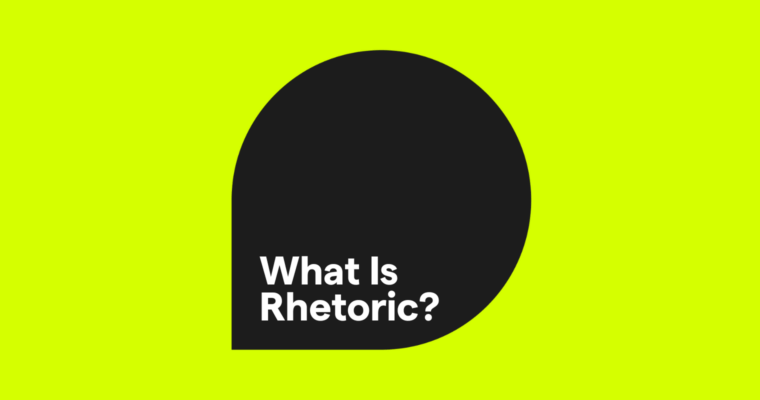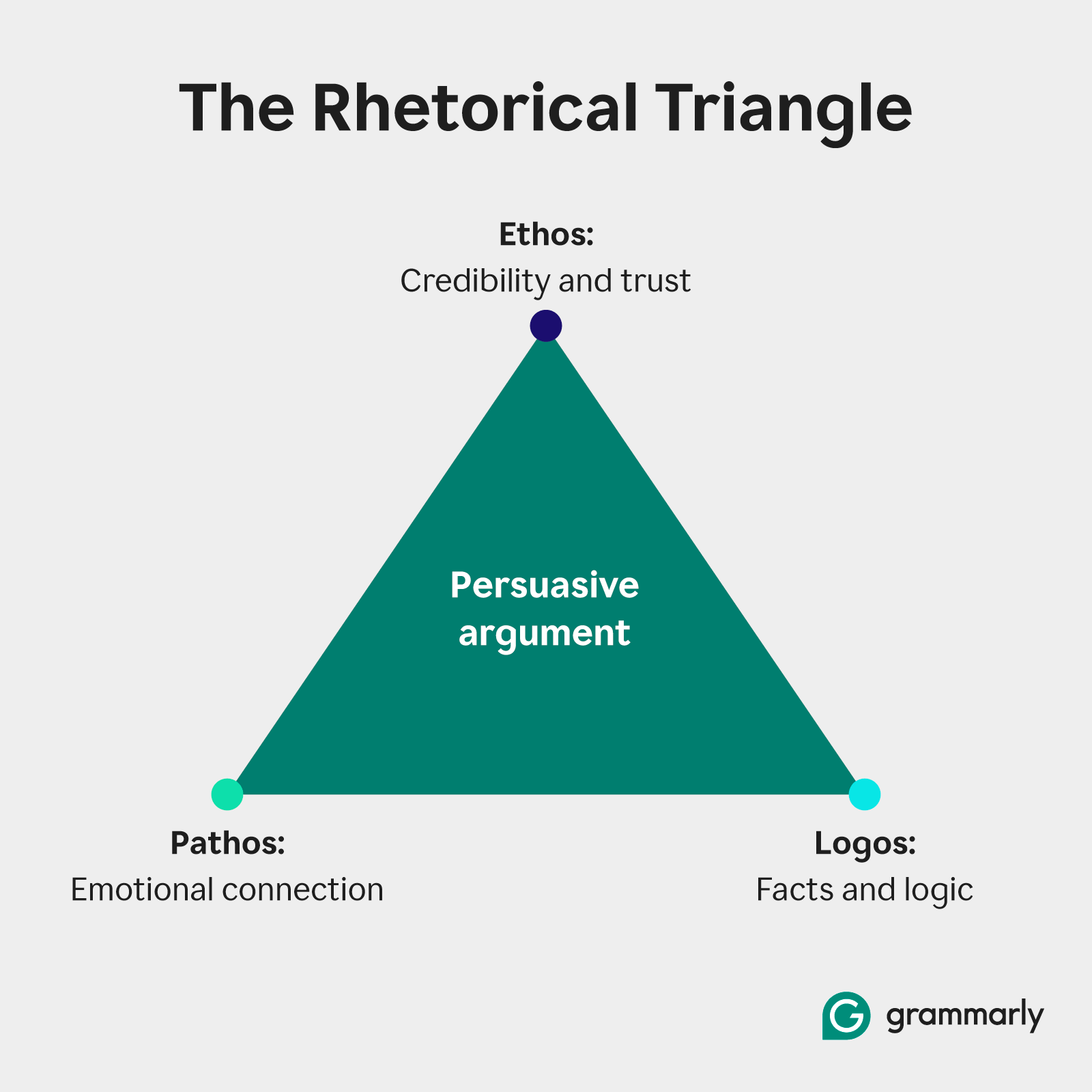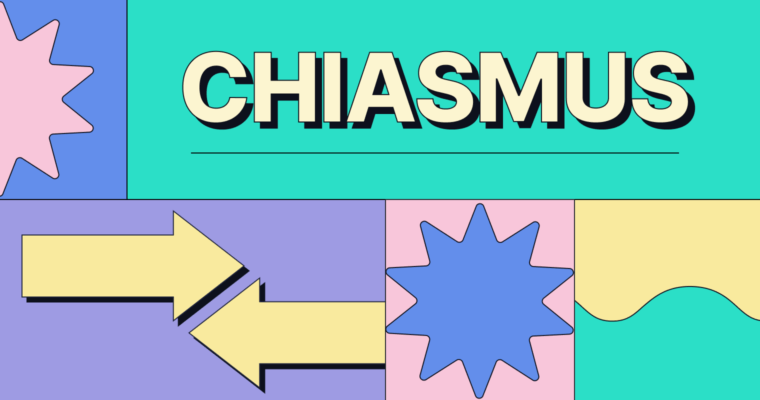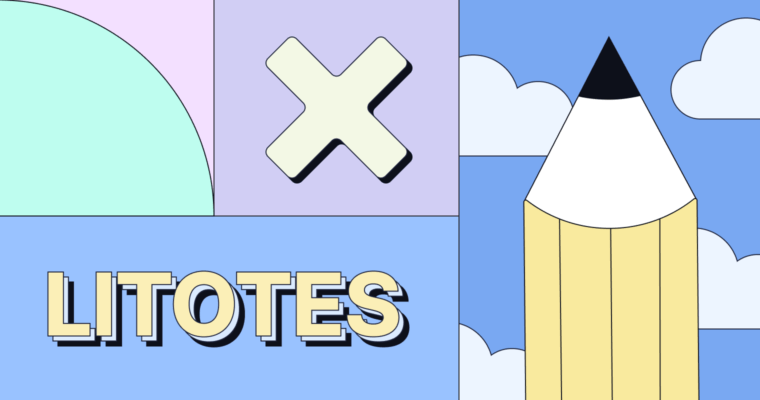
Key takeaways:
- Rhetoric is the art of constructing language to persuade, motivate, or influence an audience.
- Writers and speakers use rhetoric to influence what you think or feel about their ideas.
- Rhetoric is everywhere, in commercials, speeches, and even everyday conversations.
Rhetoric is the art of using language to persuade and influence others. While often associated with political speeches, rhetoric is present in everything from slogans to everyday conversations. We regularly use rhetorical devices like metaphors and emotional appeals to influence how our messages are received.
Understanding rhetoric helps us communicate more clearly and think critically about the messages we encounter every day. In a world full of ads, headlines, and social media posts, knowing how to spot rhetoric is just as important as knowing how to use it.
Words are never neutral, as they can reflect intentions and values. Recognizing rhetoric allows us to craft stronger messages and better interpret others’ words.
Let’s take a closer look at how rhetoric works and how people use it to influence their audiences.
Table of contents
Types of rhetoric: The rhetorical triangle
Introducing rhetorical situation
Rhetoric compared to other rhetorical devices
What is rhetoric?
Rhetoric is the art of using language to persuade, motivate, or inform an audience. Writers and speakers use rhetoric to shape how others think or feel about an idea, argument, or position.
The concept of rhetoric dates back to ancient Greece, where it was considered an essential skill for those involved in public life, whether in politics, law, or civic debate. Rhetoric was one of the three ancient arts of discourse, alongside grammar (the structure of language) and logic (the reasoning behind arguments). Together, these formed the foundation for effective communication and critical thinking in public and private life.
The word rhetoric comes from the Greek rhetorikos, meaning “oratory” or public speaking. Influential Greek thinkers helped shape the foundations of rhetoric:
- Aristotle defined rhetoric as the art of finding the best means to persuade your audience ethically and effectively.
- Plato and Socrates debated rhetoric’s role in truth and ethics.
Even today, the principles of rhetoric continue to influence how people communicate and persuade others.
Types of rhetoric: The rhetorical triangle
The rhetorical triangle, introduced by Aristotle, highlights three key ways to persuade an audience through rhetoric:
These are also known as rhetorical appeals. Each focuses on a different way of connecting with an audience—through credibility, emotion, or logic. While each appeal is powerful on its own, they’re most effective when used together strategically to strengthen your argument and resonate with your audience.

Use the table below to explore how each rhetorical appeal works, along with examples that show how to apply them.
| Type of rhetoric | Definition | Example |
| Ethos | Ethos focuses on the speaker’s credibility and trustworthiness. | “Our company has over 20 years of experience providing high-quality services.” —Highlights the business’s established reputation. |
| Pathos | Pathos appeals to emotions, aiming to create a feeling or response. | “Join our team and make a difference in the lives of those who need it most.” —Taps into the desire to help others. |
| Logos | Logos uses facts and logic to persuade the audience. | “Our product increases efficiency by 30%, saving your company both time and money.” —Relies on data and clear benefits. |
Kairos
Kairos—another important concept related to the rhetorical triangle—refers to the timing of your message. It’s about knowing when to present your argument or appeal to maximize its impact.
For example, a charity might ask for donations during a natural disaster when people are more likely to empathize and contribute. When you consider kairos, you align your message with the right timing, context, and audience readiness.
Using rhetoric
Using rhetoric carefully can help you persuade, emphasize key ideas, and connect with your audience. In the American tradition, leaders and writers have long used language to inspire change and rally support.
Here are some of the most common ways to use rhetoric:
- Persuade: Use devices like repetition, metaphor, and rhetorical questions to guide your audience toward your point of view.
- Emphasize key ideas: Carefully chosen words and well-placed pauses in speeches or writing can highlight the most important ideas.
- Engage emotions: Emotional appeals can strengthen your message and create a lasting impression.
- Clarify complex topics: Analogies and simple language can make complicated ideas easier to grasp.
Understanding these techniques can make your communication more powerful and memorable.
Introducing rhetorical situation
A rhetorical situation is the context in which communication occurs, and it’s crucial to consider when writing or speaking. Key elements include:
- The audience
- The purpose (whether you aim to entertain, inform, or persuade)
- Your role as the writer or speaker
Understanding these elements can help you craft a message that connects with your audience and achieves your goal. The table below breaks down common elements and how they relate to effective rhetoric:
| Element | Definition | Examples |
| Word choice/diction | The specific words you choose to use | Choosing formal language like “permit” instead of “let” in a professional letter |
| Structure | The way you organize your ideas or content | A speech that starts with a compelling story, followed by facts, and ending with a call to action |
| Tone | The attitude or feeling you show in your writing or speech | A motivational speech using an enthusiastic and upbeat tone, like “We can do this!” |
| Use of sources | Information or ideas you include from other people | Quoting experts, like citing a statistic from the CDC in a health article |
| Evidence | The facts or examples you use to support your claims | Using data from a recent survey to argue that most people prefer online shopping |
| Genre | The type of communication (speech, article, ad) | An advertisement that uses persuasive language and visual elements to encourage purchasing a product |
Rhetoric compared to other rhetorical devices
Rhetoric is a powerful tool used to persuade, but it works alongside several other rhetorical devices that help make communication more effective. Here’s how rhetoric compares to some common devices:
| Rhetorical device | Definition | How it relates to rhetoric | Example |
| Hyperbole | Exaggerated statements or claims that are not meant to be taken literally | Rhetoric can use hyperbole to exaggerate a point for emphasis, making the argument more striking or memorable. | “I’ve told you a million times.” |
| Anaphora | The repetition of a word or phrase at the beginning of successive clauses. | Rhetoric uses anaphora to create rhythm and reinforce key ideas, making the message more memorable. | “We shall fight on the beaches, we shall fight on the landing grounds, we shall fight in the fields …” —Winston Churchill |
| Irony | A contrast between what is said and what is meant, often for humorous or dramatic effect. | Rhetoric may use irony to highlight contradictions, adding depth or humor to an argument. | Saying “Oh, great!” when something bad happens. |
| Understatement | The presentation of something as being smaller or less important than it is. | Rhetoric uses understatement to subtly downplay an issue, often making the argument more persuasive by avoiding exaggeration. | “It’s just a scratch,” when referring to a large dent. |
| Chiasmus | A reversal of the structure of phrases or clauses. | Rhetoric uses chiasmus to create balance in the sentence, emphasizing the message by reversing the order of words or ideas. | “She has all my love; my heart belongs to her.” |
Examples of rhetoric
Rhetoric takes various forms, from political speeches to literature. Public speakers and writers use it to influence and make a lasting impression. Below are examples of rhetorical language designed to engage the audience.
| Example | Rhetorical Technique & Effect |
| “I have a dream that one day even the state of Mississippi, a state sweltering with the heat of injustice, sweltering with the heat of oppression, will be transformed into an oasis of freedom and justice.” —Dr. Martin Luther King Jr. | Repetition (“sweltering with the heat”) and vivid imagery evoke emotional intensity and inspire hope for social transformation. |
| “It was we, the people; not we, the white male citizens; nor yet we, the male citizens; but we, the whole people, who formed the Union.” —Susan B. Anthony | Anaphora (repeating “we …”) emphasizes inclusivity and challenges historical exclusions, reinforcing the argument for equal rights. |
|
“Ask not what your country can do for you—ask what you can do for your country.” —John F. Kennedy |
Antithesis (reversal of structure) highlights civic duty and inspires national service through contrast. |
|
“Just do it.” —Nike |
A direct imperative that motivates immediate action; short, memorable, and empowering. |
|
“The ultimate driving machine.” —BMW |
A bold, declarative statement creates a sense of superiority and positions the brand as best-in-class. |
| “Why should we settle for less?” | A rhetorical question that provokes thought and encourages the audience to demand better. |
| “Can’t you see what’s happening?” | Another rhetorical question that appeals to the audience’s awareness and urgency without expecting an answer. |
Strong writing leads to strong rhetoric
Good writing is the foundation of effective communication. When your writing is clear and mistake-free, your message becomes more persuasive and your rhetoric more powerful, helping you connect with readers no matter what you’re trying to say.
Make your writing strong and clear with Grammarly
Rhetoric shapes how we persuade through writing, and Grammarly helps refine that skill. Its tone detector, clarity suggestions, and word choice tools ensure your message is clear, compelling, and aligned with your intent.
Rhetoric FAQs
Whether you’re analyzing persuasive writing or brushing up on literary devices, these frequently asked questions about rhetoric will help clarify key concepts and uses.
What is a rhetorical question?
A rhetorical question is a question asked to make a point, not to get an actual answer. It’s often used to emphasize an idea, provoke thought, or persuade the audience by leading them to the intended conclusion without stating it directly.
What is a synonym for rhetoric?
You can use several different words instead of “rhetoric,” depending on the situation. These words usually describe how someone speaks or writes to make a point.
Common synonyms for “rhetoric” include:
- Persuasion
- Oratory
- Eloquence
- Discourse
- Argumentation
- Speechcraft
- Expression
How do I know if rhetoric is being used?
Rhetoric is used when someone tries to convince you of something through their words. This might happen in a speech, ad, article, or conversation.
Look for emotional language, strong opinions, questions with obvious answers, or repeated ideas. These can be signs that someone is using rhetoric to make a point.
Why is rhetoric important in everyday life?
People use rhetoric every day to share ideas, shape opinions, and inspire action. Understanding it helps you better judge what you hear and makes it easier to explain your thoughts clearly and confidently.






